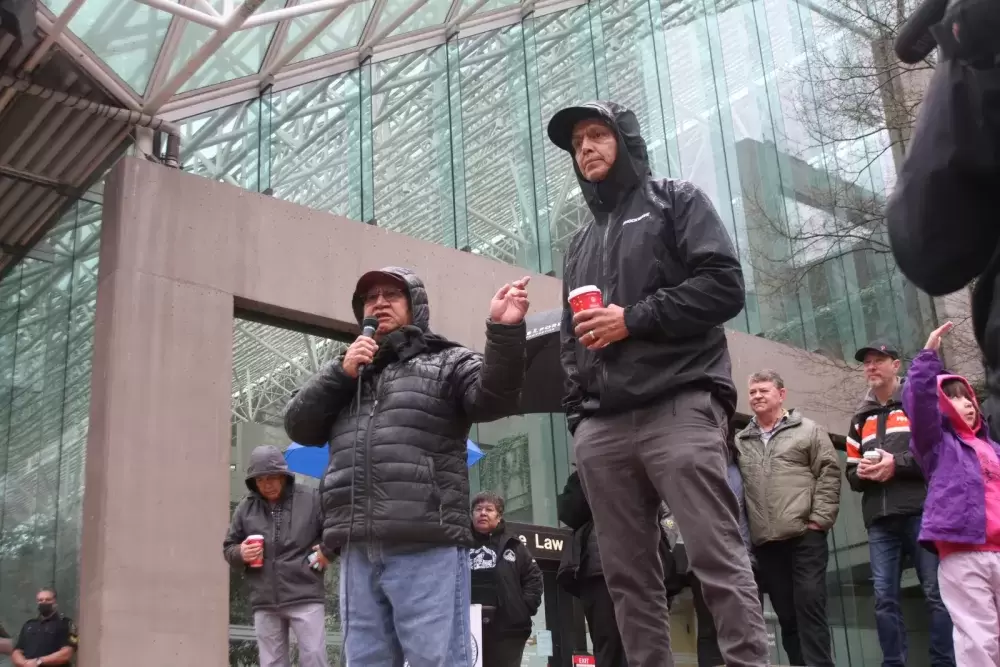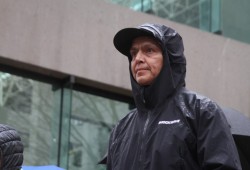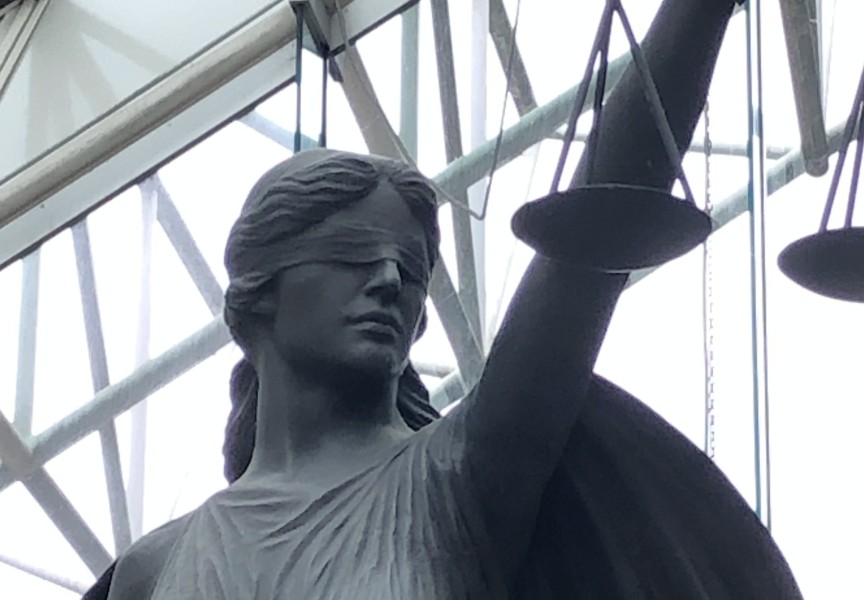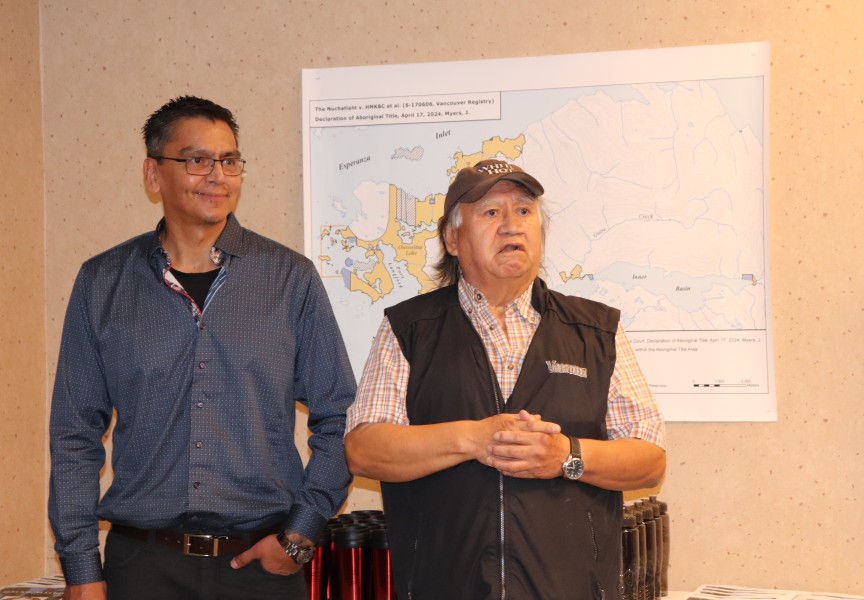The Nuchatlaht are heading into the summer celebrating a court ruling on their Aboriginal title over northern Nootka Island, while knowing that work lies ahead to satisfy a requirement to prove where exactly their territory lies.
The decision came from the B.C. Supreme Court earlier this spring, on May 11, as Justice Elliot Myers found that the small First Nation satisfies the legal test to be granted title over their territory on Nootka Island.
The ruling heavily relied on the Tsilhqot’in decision from the Supreme Court of Canada in 2014, which set out the need for a First Nation to prove exclusive and continued occupation of an area to be recognized with Aboriginal title. The Nuchatlaht case hinged on proving this occupation from 1846, the date that the British Crown assumed sovereignty over the First Nation’s territory.
“In my opinion the plaintiff has demonstrated an intention and capacity to control the land I found it occupied in 1846,” stated Myers in his recent ruling.
As the first court decision to apply the Tsilhqot’in case - and the first Aboriginal title decision since British Columbia adopted the United Declaration on the Rights of Indigenous Peoples in 2019 – the case is expected to lead the way for other First Nations seeking recognition of their territory under Canadian law.
“With this victory Nuchatlaht hope to clear a path for others to follow,” said Tyee Ha’wilth Jordan Michael in a press release issued from the First Nation after the ruling was released.
The case analyzed a collection of local groups who used northern Nootka Island in 1846. Evidence presented by the Crown’s expert witness Dorothy Kennedy lists five groups that occupied the area at the time, all of which Myers determined had amalgamated with the Nuchatlaht to form a ceremonial confederacy.
The province argued that one group, the Shuma’athat, was separate from this confederacy at the time, but this was not an issue for Myers in his decision.
“If the Shuma’athat (or any other group for that matter) merged with the Nuchatlaht after 1846, the Nuchatlaht are the proper claimant group for that territory,” stated the judge.
First submitted to the court in January 2017, the title claim encompasses 20,000 hectares on the northern half of Nootka Island off Vancouver Island’s west coast. But Myers declined to grant Aboriginal title to this whole area, noting “too many gaps” to prove that all of this area should belong to the Nuchatlaht.
Myers quoted Philip Drucker, whose 1951 study of Indigenous people of Vancouver Island’s northwest coast was frequently cited in the court decision. During his time with Nuu-chah-nulth-aht in the 1930s and 1940s Drucker observed how coastal people heavily relied on ocean resources, rather than venturing far inland.
“It is scarcely to be wondered at, what with the ruggedness of the mountainous terrain and the dense tangle of vegetation, that the native population for the most part frequented the woods but little,” wrote Drucker.
But, like other Nuu-chah-nulth, the Nuchatlaht’s use of cedar was historically foundational to its culture. The trees’ bark provided material for clothing, cedar planks were used for homes, and sections or the entirety of trunks were made into canoes.
Culturally modified trees – or CMTs – within the claim area composed a large portion of the Nuchatlaht’s evidence for the court, including the identification of 8,386 CMTs by archaeologist Jacob Earnshaw. This evidence lies an average of 845 metres from Nootka Island’s coast, but the largest cluster of CMTs, numbering 2,358 examples, sit approximately 1.5 kilometres inland. These trees were harvested from 1541 to 1969, according to the archaeologist’s findings.
In his testimony Earnshaw said that CMTs would be found anywhere in the claim area.
“[I]f these deep, inland areas were to be consistently surveyed, large cedar harvesting areas would continue to be identified,” he said.
This didn’t appear to satisfy the judge, who determined that the only “direct evidence” of occupation specific to Nuchatlaht in the claim area were village sites, including Lūpȧtcsis, where the Nuchatlaht confederacy congregated in the summer.
“With respect to the interior, there is almost no evidence of use by the Nuchatlaht,” wrote Myers in his decision. “Further, Dr. Drucker said that the Nuu-chah-nulth treated the interior and coastal areas differently in terms of ownership and had far less knowledge of the interior.”
After over 50 days in court and six years since the title claim was first filed, the case has proven to be a significant drain on resources for the Nuchatlaht, which has less than 170 members. But the First Nation intends to continue in its battle for title over the territory that members have considered home for countless generations.
“We need to take this victory and continue fighting for recognition of our rights,” said Councillor Mellissa Jack.
“We’re not going anywhere, we know what’s ours,” said Nuchatlaht Councillor Erick Michael. “This isn’t just about Nuchatlaht, but about every First Nation.”
The Nuchatlaht plan to apply to the B.C. Court of Appeal over Myers’ decision to decline awarding the entire claim area.








